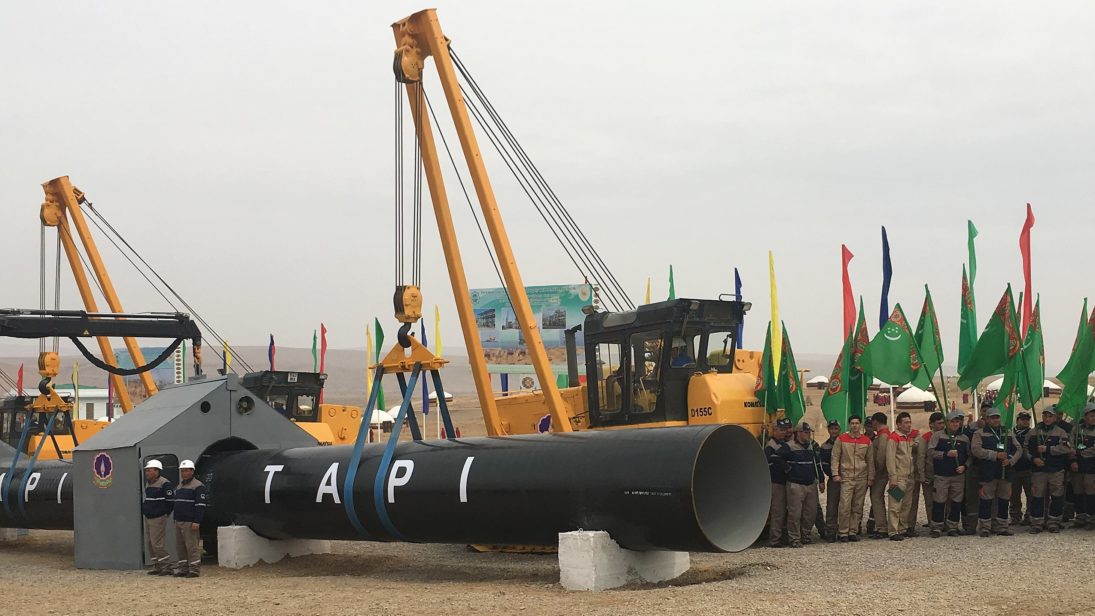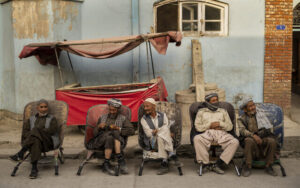Since the Taliban’s return to power in August 2021, Afghanistan’s neighbors and regional powers, particularly those in Central Asia, have been navigating a complex and delicate balancing act. The fall of Kabul reshaped the regional landscape, leaving many governments uncertain about how to approach the new rulers, whose controversial history and governance style have generated widespread concern, particularly regarding human rights and stability. Despite the lack of formal international recognition for the Taliban regime, a gradual yet noticeable shift is occurring in how Afghanistan is viewed by its neighbors and key players in the broader region.
Central Asian countries, which have historically relied on Afghanistan for trade routes and strategic influence, are increasingly recognizing the Taliban as an unavoidable force in ensuring regional stability and economic connectivity. Trade agreements have been signed, diplomatic channels have been opened, and in some cases, countries like Kyrgyzstan have even removed the Taliban from their lists of terrorist organizations. These actions reflect a pragmatic, albeit contentious, approach to engaging with the regime.
Economic Deals and Regional Integration
In August 2024, the Taliban finalized a monumental $2.5 billion agreement with Uzbekistan, comprising 12 investment deals worth $1.4 billion and 23 trade agreements valued at $1.1 billion in sectors, such as agriculture, energy, and manufacturing. A year earlier, Kazakhstan had also inked deals worth $200 million with the Taliban, largely focused on agricultural products. Iran has emerged as another key economic partner for Afghanistan. The two countries signed five comprehensive agreements covering transportation, civil aviation, mining, and free trade zones. Additionally, the Taliban announced plans to invest $35 million in Iran’s Chabahar port, a strategic hub that could bolster Afghanistan’s connectivity with international markets. Despite lingering political tensions, Afghanistan and Pakistan agreed to separate business from politics by establishing a barter trade system and signing tariff agreements to facilitate the exchange of goods across their shared border.
Beyond its immediate neighbors, the Taliban have also reached out to major powers such as Russia and China. Afghanistan has sought fuel and wheat supplies from Russia, while Chinese companies have been engaged in the Afghan mining sector, reflecting a broader regional interest in Afghanistan’s untapped resources.
Several of the economic deals and projects that the Taliban are engaging with today were initiated under the previous Afghan government. Some of these deals, particularly large-scale infrastructure and trade projects, are long-term agreements that were conceived during the administration of Ashraf Ghani or even earlier, but have been continued or re-negotiated under Taliban rule.
Incentives behind the cooperations
The Taliban’s aggressive pursuit of economic partnerships is driven by more than just financial motives—it is a strategic effort to bolster their legitimacy and demonstrate their capacity to govern. As Afghanistan remains isolated from much of the international community, particularly Western nations, the Taliban are leveraging these regional agreements to showcase their diplomatic engagement and attract critical investments. By these deals the Taliban aim to oversee major infrastructure and energy projects, further enhancing their credibility both at home and abroad and signal that Afghanistan is open for business and capable of securing its economic future under their leadership.
However, the incentives for neighboring states to engage with the Taliban are not solely economic. Countries like Uzbekistan and Turkmenistan, for instance, are primarily motivated by security concerns. Afghanistan has long been a breeding ground for extremist groups, and the instability within its borders poses a direct threat to the wider region. By cooperating with the Taliban, these countries hope to prevent Afghanistan from becoming a safe haven for terrorist organizations that could destabilize the region. Security cooperation with the Taliban is seen as a preventive measure to protect their own borders from the fallout of Afghanistan’s internal volatility.
Moreover, Afghanistan’s strategic geographic location makes it an indispensable transit route for regional trade. Landlocked Central Asian countries, particularly Turkmenistan, stand to benefit from Afghanistan’s role in major projects like the Turkmenistan-Afghanistan-Pakistan-India (TAPI) gas pipeline. The success of the TAPI project, which aims to transport natural gas from Turkmenistan to South Asia, hinges on Afghanistan’s stability and the Taliban’s cooperation. Regional engagement with the Taliban thus becomes a critical factor for accessing broader markets and ensuring the flow of vital energy resources. These economic opportunities are too significant for Central Asian countries to ignore, even in the face of political and diplomatic risks.
Challenges to Regional Cooperation with the Taliban
Despite the potential economic and security benefits, there are substantial challenges that complicate cooperation between the Taliban and regional states.
First and foremost, security risks remain a significant concern. While the Taliban have promised to restore order, the ongoing presence of terrorist groups, drug trafficking networks, and general political instability in Afghanistan continues to undermine investor confidence. These security challenges create a high-risk environment, making long-term investments in Afghanistan particularly precarious. The persistent threat of violence and instability casts doubt on the reliability of the Taliban’s control and their ability to maintain order.
Regulatory uncertainty is another major obstacle. Afghanistan’s legal framework under the Taliban remains poorly defined, complicating investments in critical sectors like infrastructure and mining. Without clear guarantees and regulatory protections, investors are understandably hesitant to embark on long-term projects, particularly ones that involve substantial financial commitments. The lack of transparent governance and legal safeguards also makes it difficult for foreign investors to trust that their interests will be protected under the Taliban’s rule.
Moreover, the risk of international sanctions poses a significant barrier to deeper engagement. Many countries, particularly in the West, continue to impose sanctions on Afghanistan due to the Taliban’s human rights record and governance practices. These sanctions can severely impact border trade and international investments, placing Central Asian countries in a difficult position. By engaging with the Taliban, they risk alienating their Western partners and facing potential economic repercussions themselves.
Environmental concerns further complicate the situation. The Taliban’s plans to construct the Qosh Tepa Canal, which would divert water from the Amu Darya River, have raised alarm in Uzbekistan and Turkmenistan. The Amu Darya is a critical water source for agriculture in these countries, and any disruption to its flow could have devastating consequences for their economies. Environmental disputes over water resources could strain relationships between the Taliban and their neighbors, adding yet another layer of complexity to regional cooperation.
Conclusion
The evolving economic relationships between the Taliban and Central Asian countries are shaped by a delicate interplay of economic, political, and security considerations. While the Taliban seek legitimacy and economic development, their neighbors pursue strategic interests and economic opportunities. However, these partnerships are fraught with challenges, including security risks, regulatory uncertainty, and environmental concerns. The future of this cooperation will largely depend on the Taliban’s ability to stabilize Afghanistan and address these concerns, as well as the international community’s reaction to these evolving partnerships. Ultimately, the path to regional integration remains uncertain, but the stakes for all involved are undeniably high.


